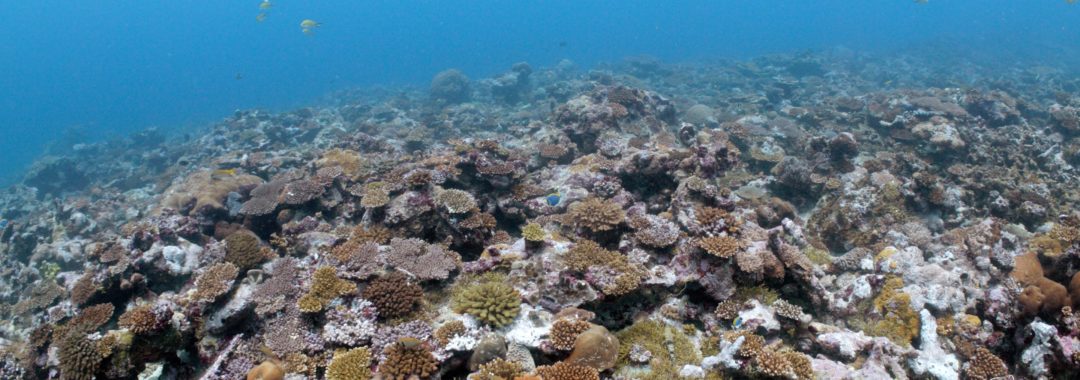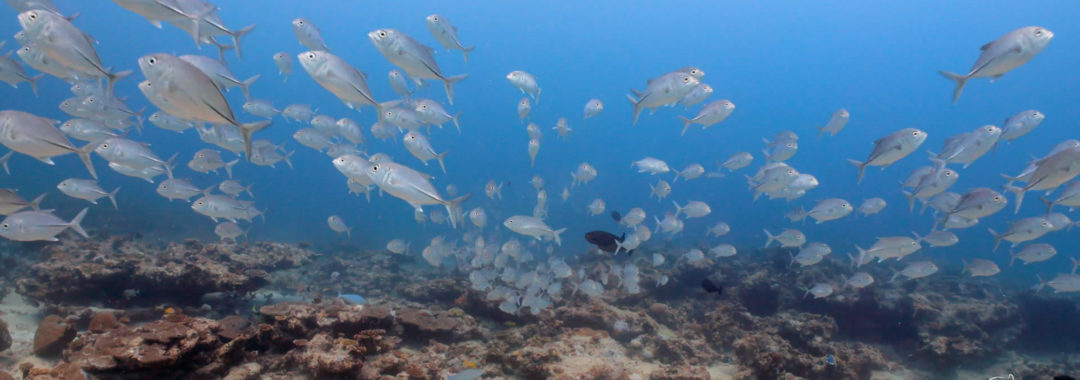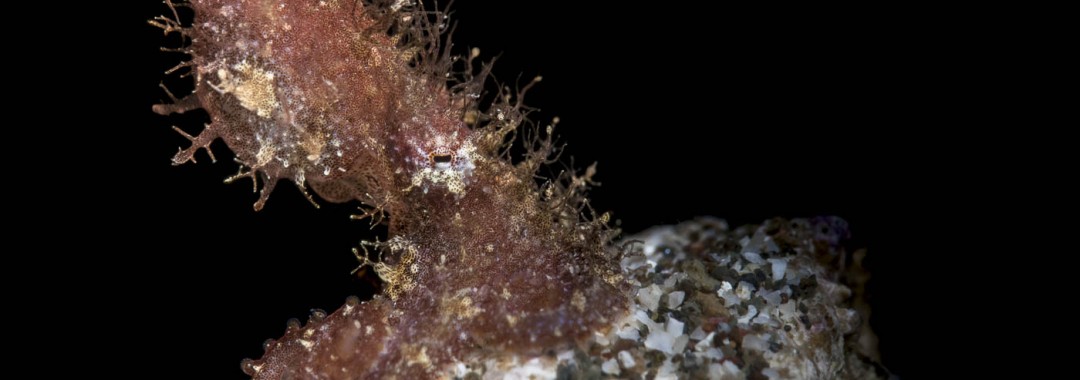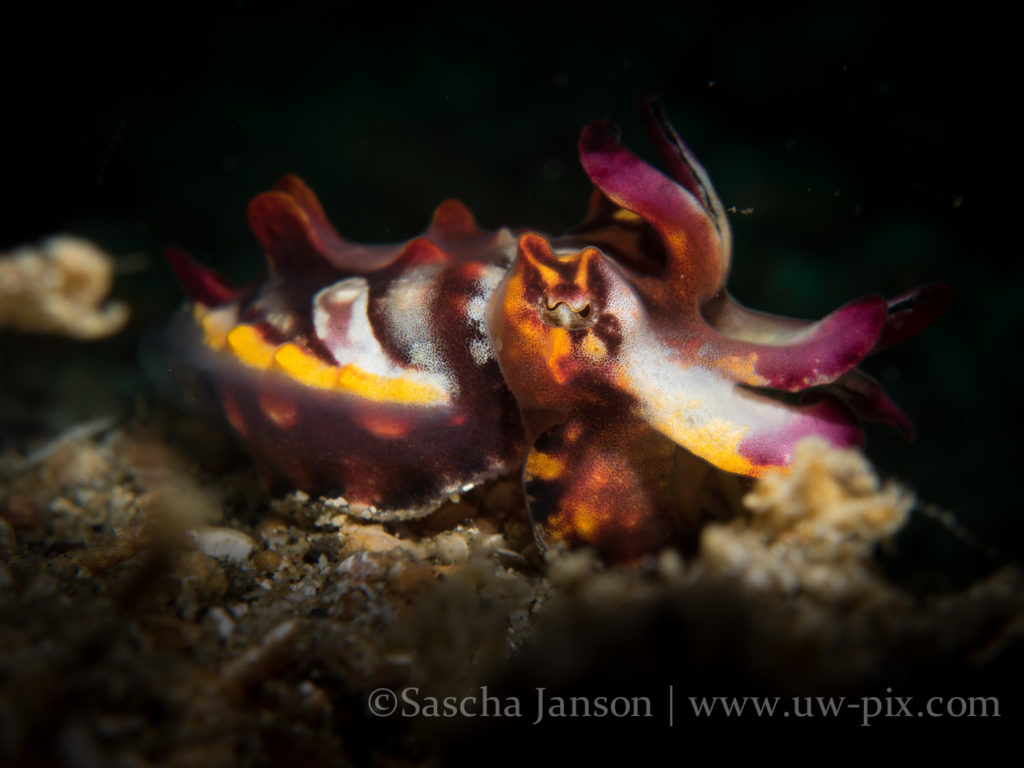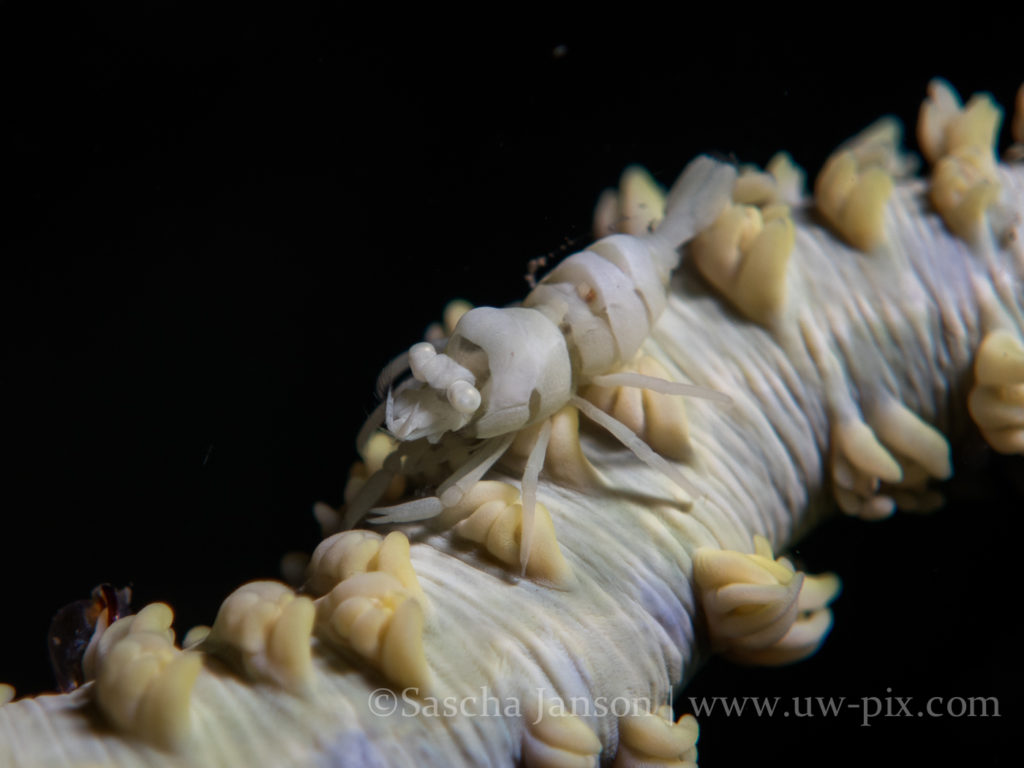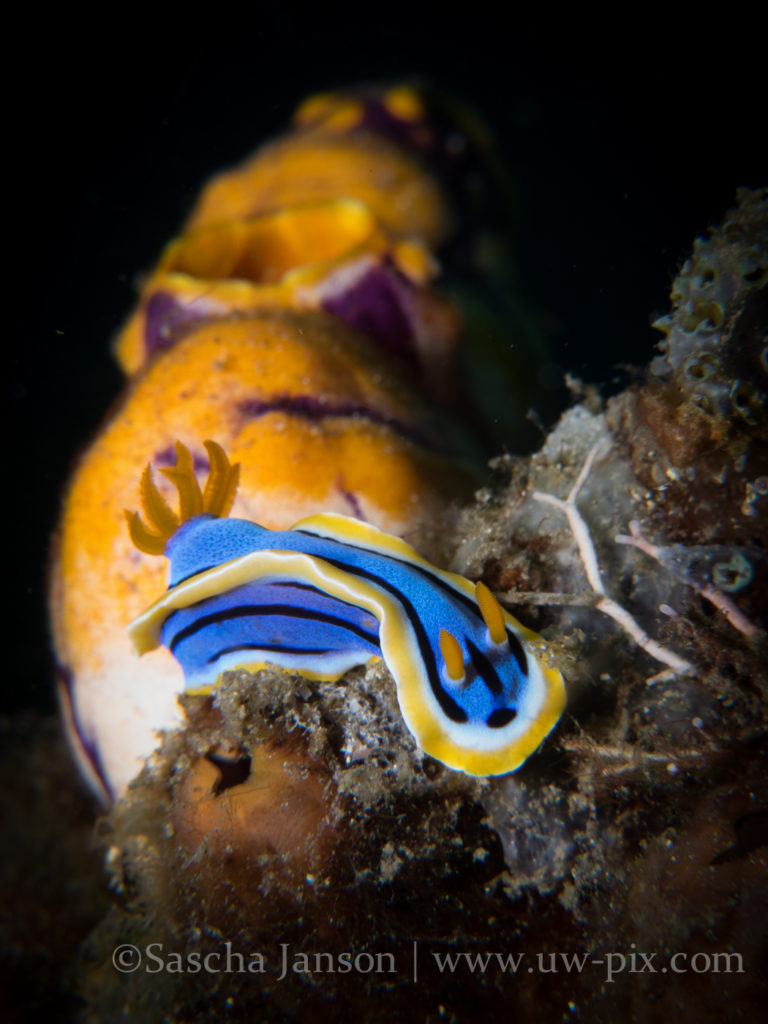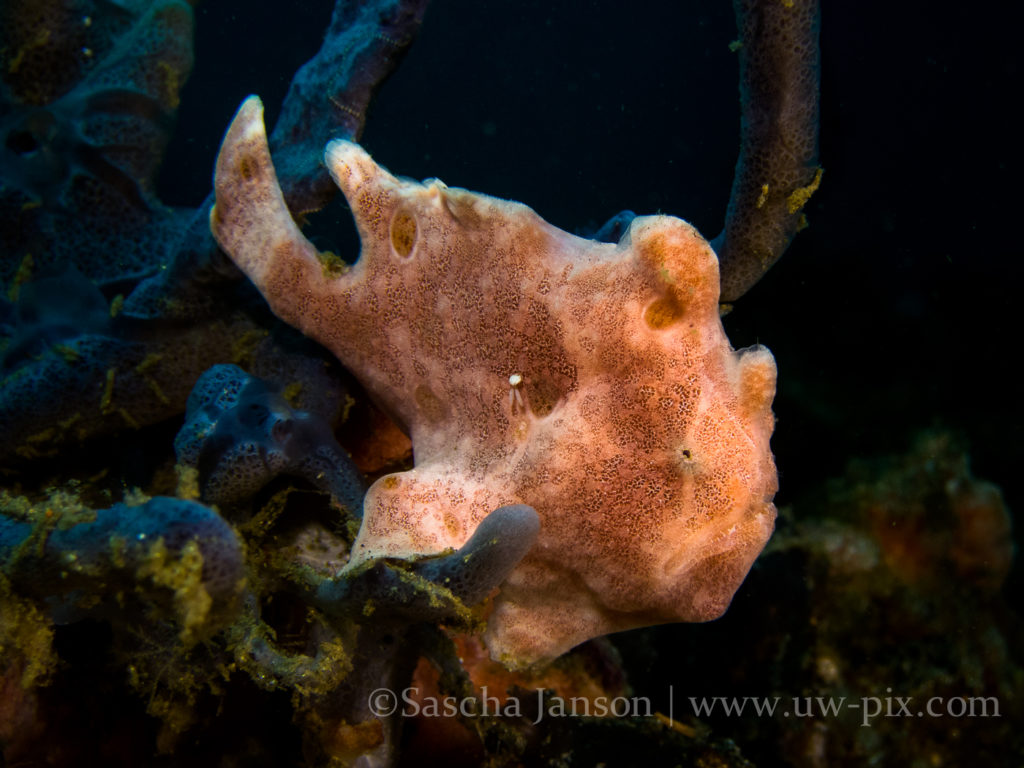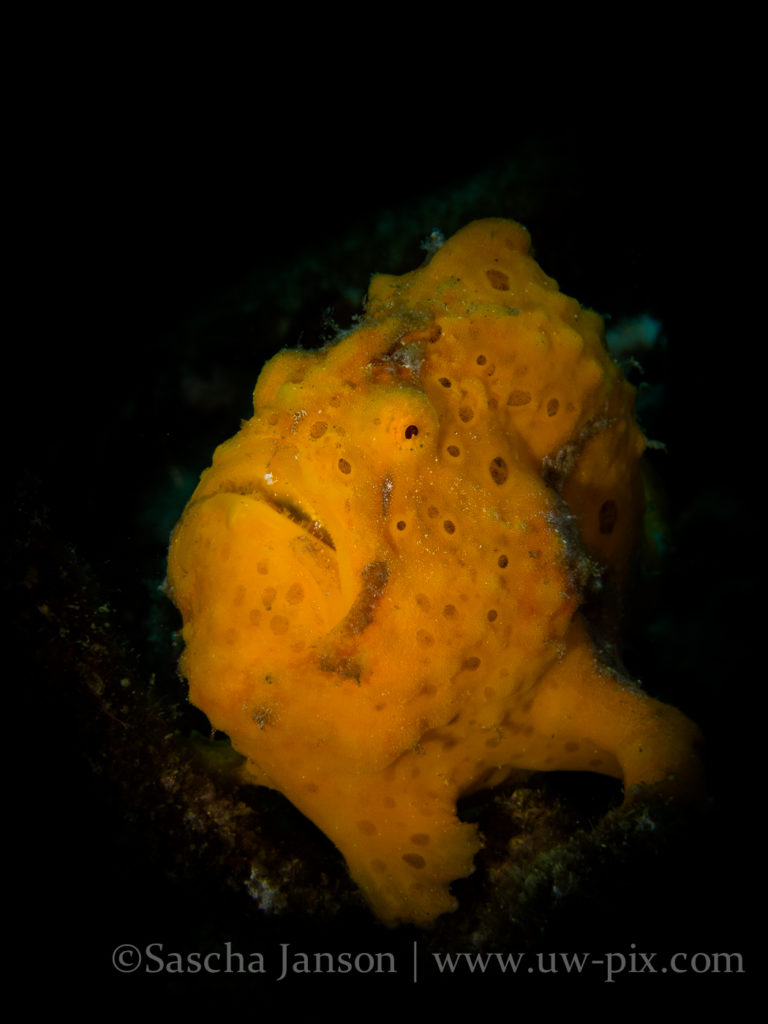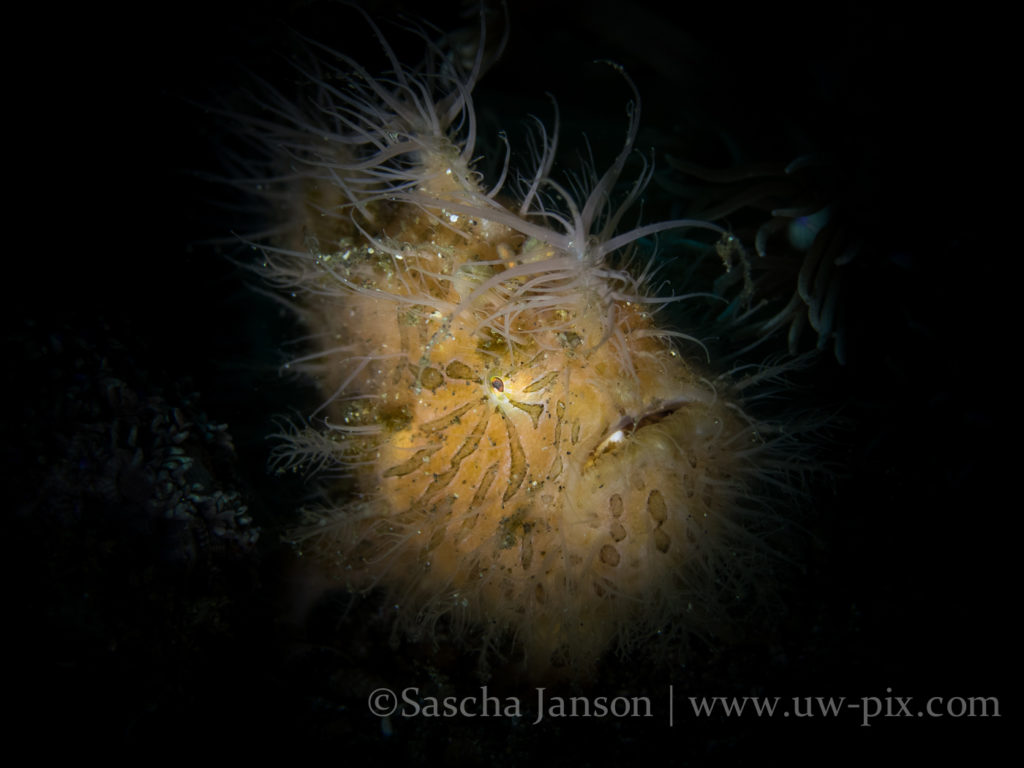This February we were lucky to film one of Laamu’s rarest marine creatures, an ornate eagle ray! (I had the 100mm macro lens on my C200, but the ray was far away and very deep – around 50m, I was at 30m depth so I was able to shoot a large ray with a macro lens). Other highlights of the month include close-ups of beautiful sharks, a fever of stingrays, and a graceful ballet performed by two surgeonfishes. Kick back and enjoy this glimpse into another world!
Tag Archives: Canon
Deep Blue Divers | 2018 November Highlights
This month’s November highlights video features some unusual footage of rare macro life filmed on the Six Senses Laamu house reef, gorgeous coral scenes and awe-inspiring video of
Filmed while diving with Deep Blue Divers in Laamu / Maldives on a Canon C200 with Canon 100mm macro, SubSee +5, Sigma Art 18-35 and the Nauticam Wide Angle Conversion Port WACP.
#Maldives #underwatervideography #outoftheordinary #scubadiving
Deep Blue Divers | 2018 August Highlights
Filmed while diving with Deep Blue Divers in Laamu / Maldives on a Canon C200 with Canon 18-55 IS STM / Sigma 18-35 1.8 and the Nauticam Wide Angle Conversion Port WACP.
Best underwater settings for the Canon Powershot G7X Mark II
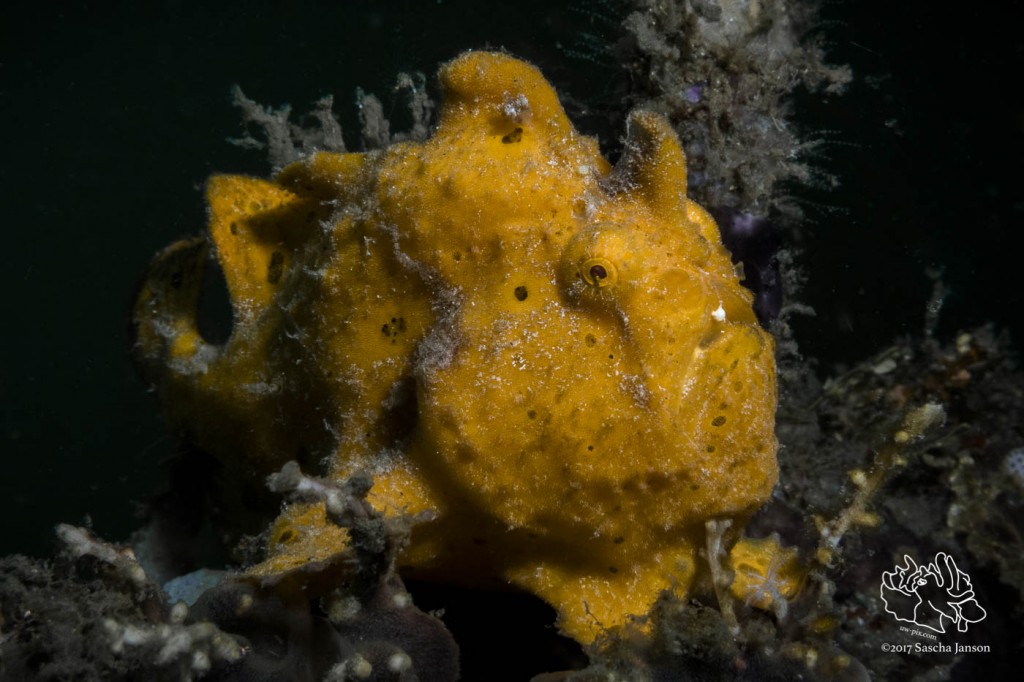
Painted Frogfish (Antennarius pictus) in the Lembeh Strait – Canon G7X Mark II, 1x INON S-2000 (on TTL), f8, 1/250sec, ISO160, ND filter ON
For shooting with strobe(s), I recommend using MANUAL mode – The good thing about the Canon G7x and the Canon G7X Mark II – TTL works even in Manual mode! No need to shoot in Av mode anymore!
Here are some setting which work for me, I don’t say that these are the only settings 🙂
The settings I didn’t list are either not important, or I don’t know what they mean 😉
Camera MENU 1
Image quality RAW (I’m shooting only raw, if you want JPEG, I recommend setting the camera to RAW & JPG large superfine so you’ll have RAW images for later use – just in case)
Still Image Aspect Ratio 3:2 (use the max resolution – you paid for 20 Megapixel, so use them all – you can always crop later)
Image review 2 sec. (this is long enough for evaluating the image)
Camera MENU 2
Touch shutter Disable (Touch screen doesn’t work through the housing yet)
Face ID Settings Off (unless you want to shoot your buddy underwater)
Camera MENU 3
Digital Zoom Off (don’t use the Digital Zoom!!!)
AF operation ONE SHOT
AF method 1-point AF (I usually don’t use the Face AiAF tracking, because most likely the camera will not recognise the critters’ faces or eyes and focus on the wrong part of the critter ![]() )
)
AF Frame Size Small (For shooting tiny subjects it’s easier to focus on the desired area)
Continuous AF On
Camera MENU 4
AF+MF – ON I like this function as it allows you to manually focus while half pressing the shutter with the front dial while being in AF mode – this is super cool for super macro!
AF-assist Beam Off (Save battery, the light won’t travel through the housing)
MF-Point Zoom up to you 🙂 – I sometimes use it, sometimes I don’t
Safety MF – Off (If you leave it ON, the camera will readjust the focus after manually focusing)
MF Peaking Settings ON – High – Red
Camera MENU 5
Bracketing OFF
ISO speed 125
Metering mode SPOT (doesn’t matter when shooting manual strobe, but when shooting TTL is can make the difference)
ND Filter This filter will cut your exposure by -3 stops. Use it if the image is still overexposed with minimum strobe power or if you want a black background. It’s very useful when shooting super-macro with a close-up lens like the INON UCL 165, INON UCL 100, SubSee+5, SubSee+10, or Nauticam CMC and when shooting with snoots like the Retra LSD.
Flash Settings Auto when shooting TTL (set your external strobe to TTL), Manual and minimum when adjusting the external strobe manually
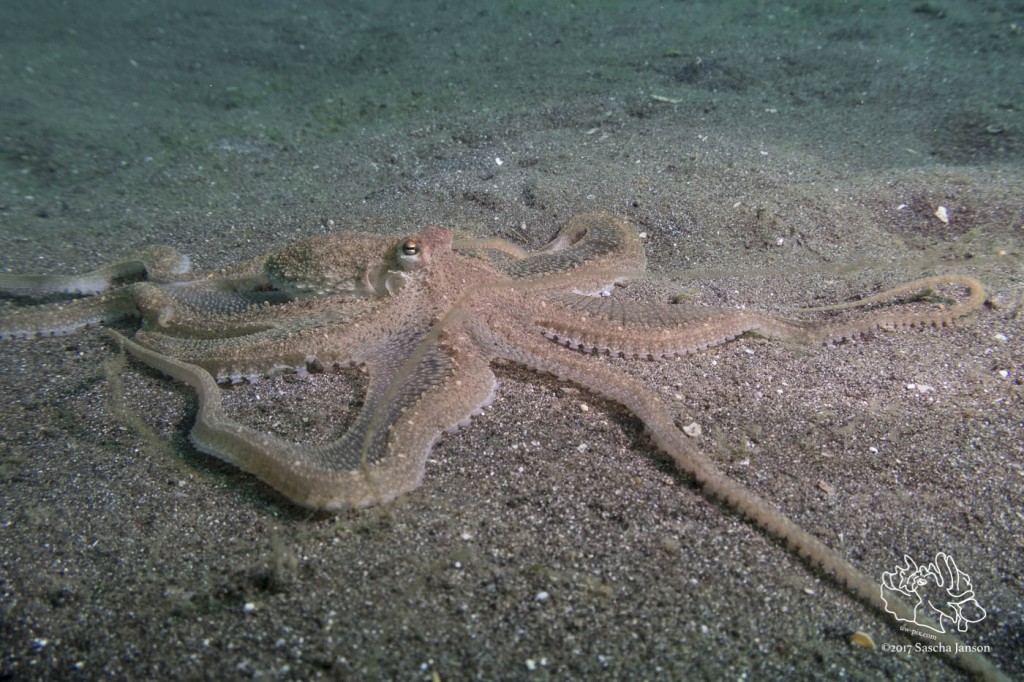
Longarm Octopus (Abdopus sp.) in the Lembeh Strait | Canon G7X Mark II, 1x INON S-2000 (on TTL), f8, 1/160sec, ISO160
Camera MENU 6
White Balance AWB (when shooting RAW it doesn’t really matter – we can make a white balance later in post production, unless you shoot video, but usually the AWB does a pretty good job on the Canon)
When shooting super-macro with a close-up lens you have to use the zoom to get the best possible result. If you want the maximum magnification, zoom in all the way (make sure to switch the Digital Zoom OFF), then get very close. The distance depends a bit on the lens, but typically I would say between 5-12cm / 1-3inches away from the subject (the subject should get in focus automatically when the continuous AF is set to on), half press the shutter until you get the green square and shoot.
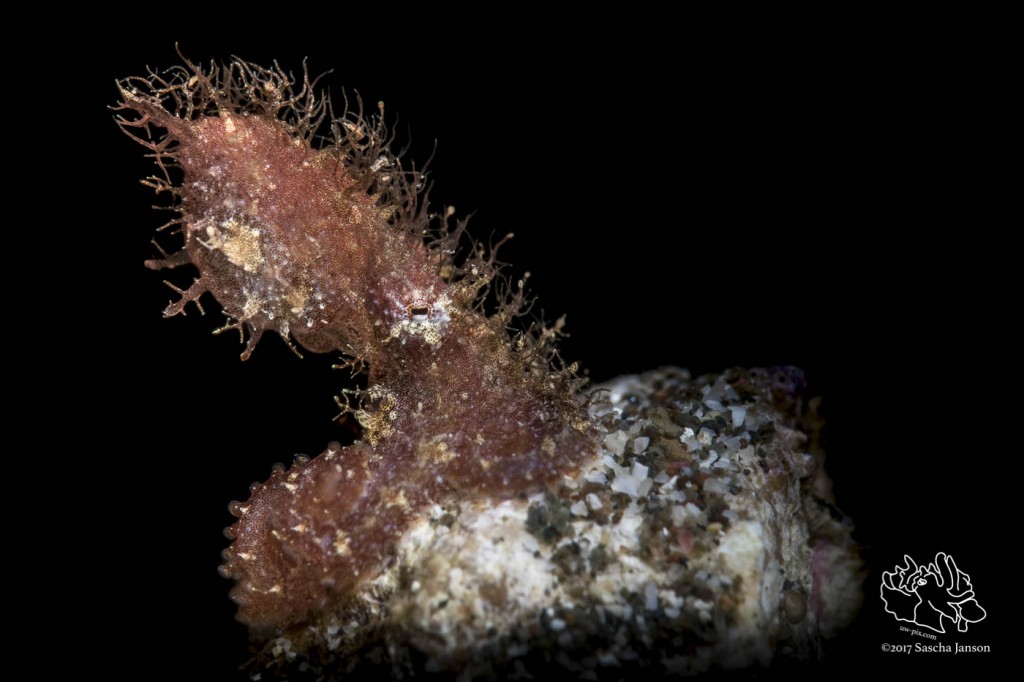
Snooted undescribed Hairy Octopus (Octopus sp.) in the Lembeh Strait | Canon G7X Mark II, 1x Nauticam CMC-1, 1x INON Z-240 with Retra LSD, f11, 1/400sec, ISO160, ND filter ON
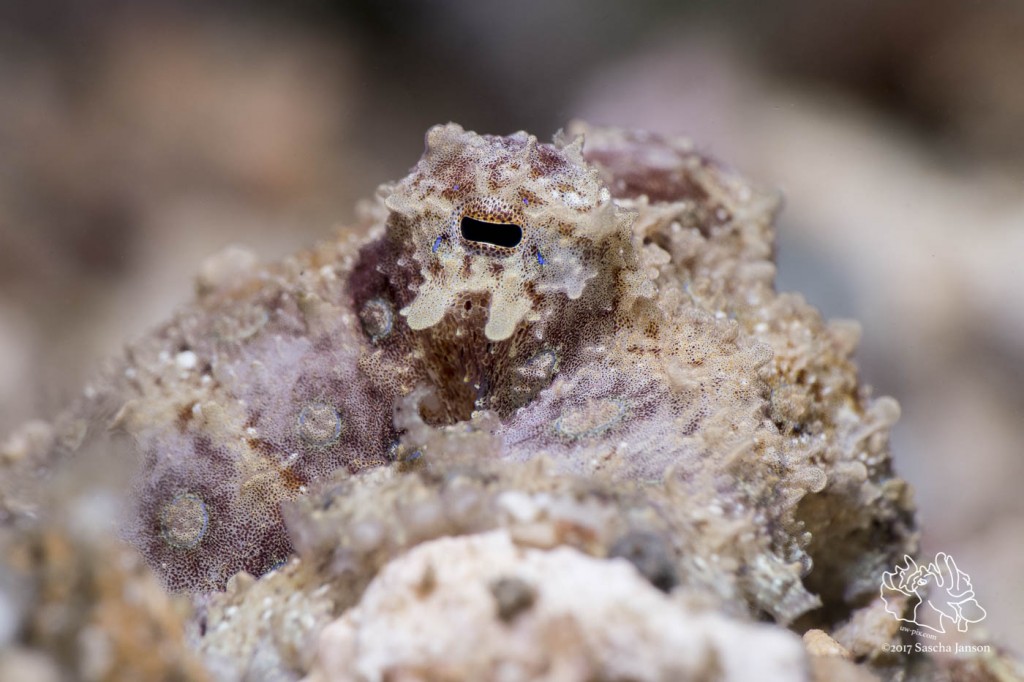
Blue-ringed Octopus (Hapalochlaena sp.) in the Lembeh Strait | Canon G7X Mark II, 1x Nauticam CMC-1, 1x INON S-2000 (on TTL), f9, 1/320sec, ISO160
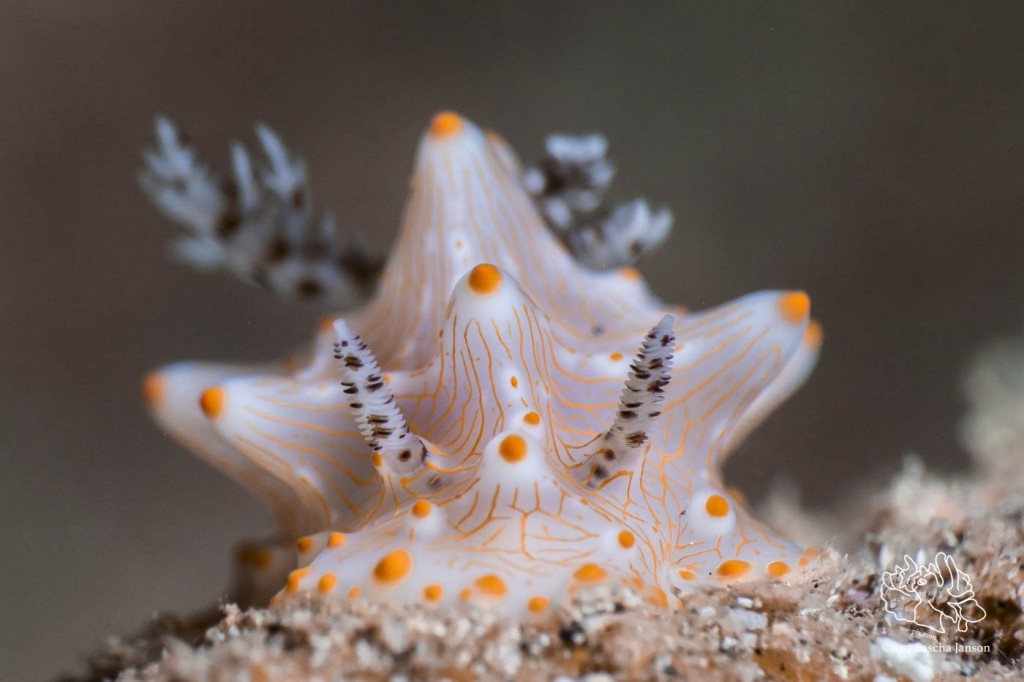
Halgerda nudibranch (Halgerda batangas) in the Lembeh Strait | Canon G7X Mark II, 1x Nauticam CMC-1, 1x INON S-2000 (on TTL), f9, 1/320sec, ISO160
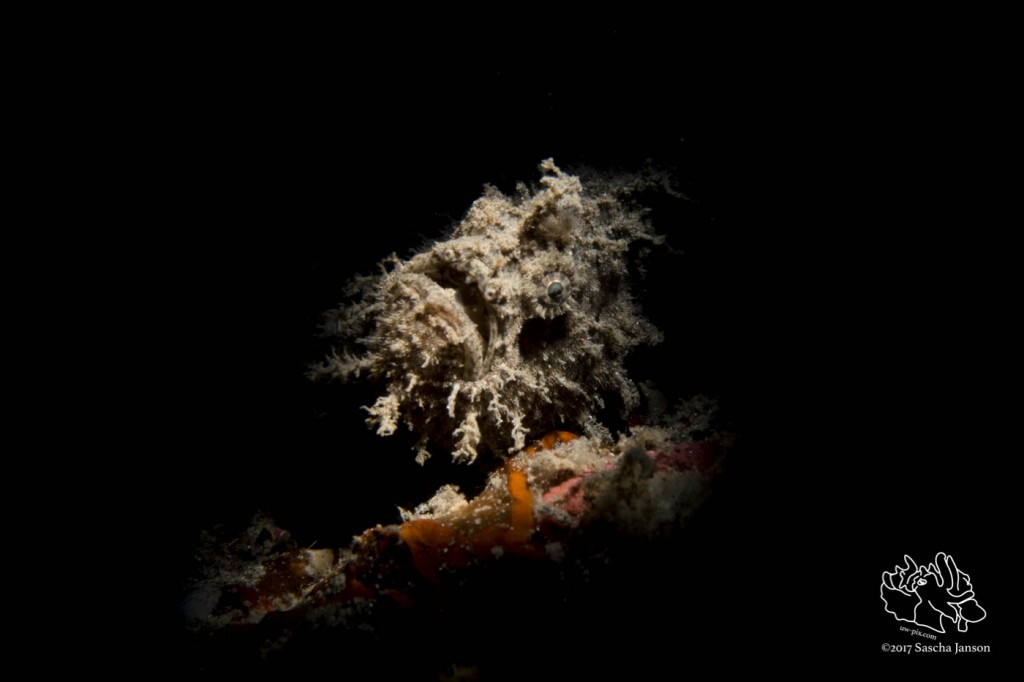
Snooted Ocellated frogfish (Antennarius ocellatus) in the Lembeh Strait | Canon G7X Mark II, 1x , 1x INON Z-240 with Retra LSD, f11, 1/400sec, ISO160, ND filter ON
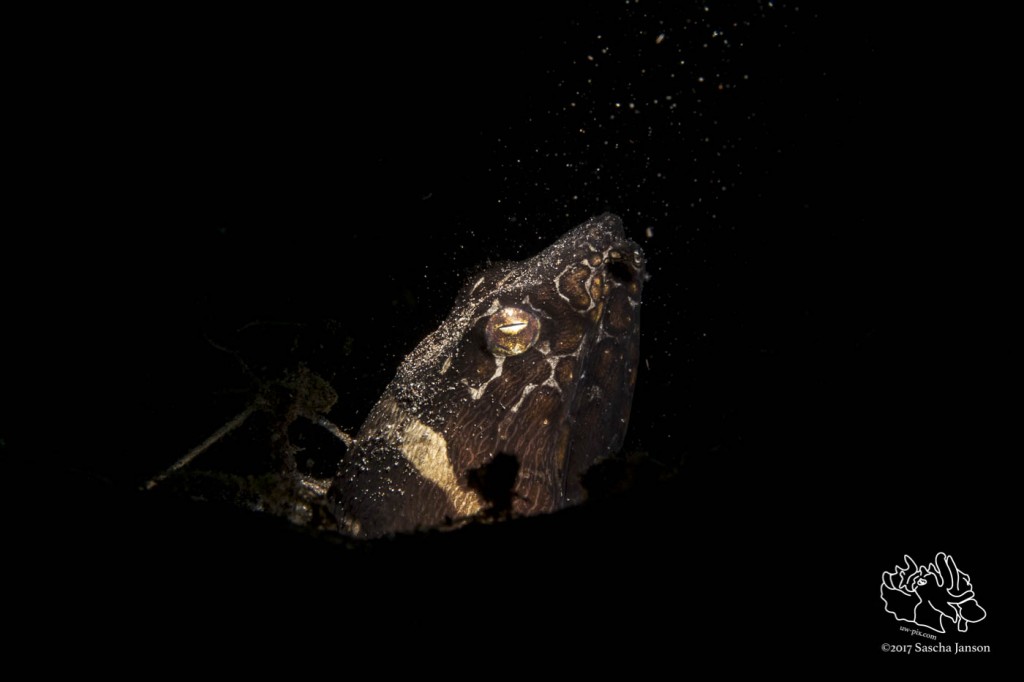
Snooted Napoleon snake eel (Ophichthus bonaparti) in the Lembeh Strait | Canon G7X Mark II, 1x INON Z-240 with Retra LSD, f11, 1/200sec, ISO160, ND filter ON
Shooting with LED lights:
If you’re shooting with strong LED lights, you can shoot in Av mode, if you want to be more creative, shoot in manual mode. The good thing about shooting with constant lights is that you can see the light before already, so the light-meters work! Good starting settings for shooting in AV mode are:
F5.6 for getting a relative good depth of field (If you have powerful enough lights, and you get close, you can even shoot f8!)
ISO 160 – 320 don’t go higher than 320, or you will get a lot of noise
ND filter OFF – you shouldn’t use the ND filter when shooting with LED lights (unless shooting super macro)
Exposure compensation ![]() should be at -2/3 – that will be a good exposure underwater.
should be at -2/3 – that will be a good exposure underwater.
All the other settings should be the same like above
The camera will now change the shutter speed to get the desired amount of light. If the shutter speed is slower then 1/60sec you have to go up with the power of the LED or change the ISO (higher number) or choose a larger aperture (lower F-number)
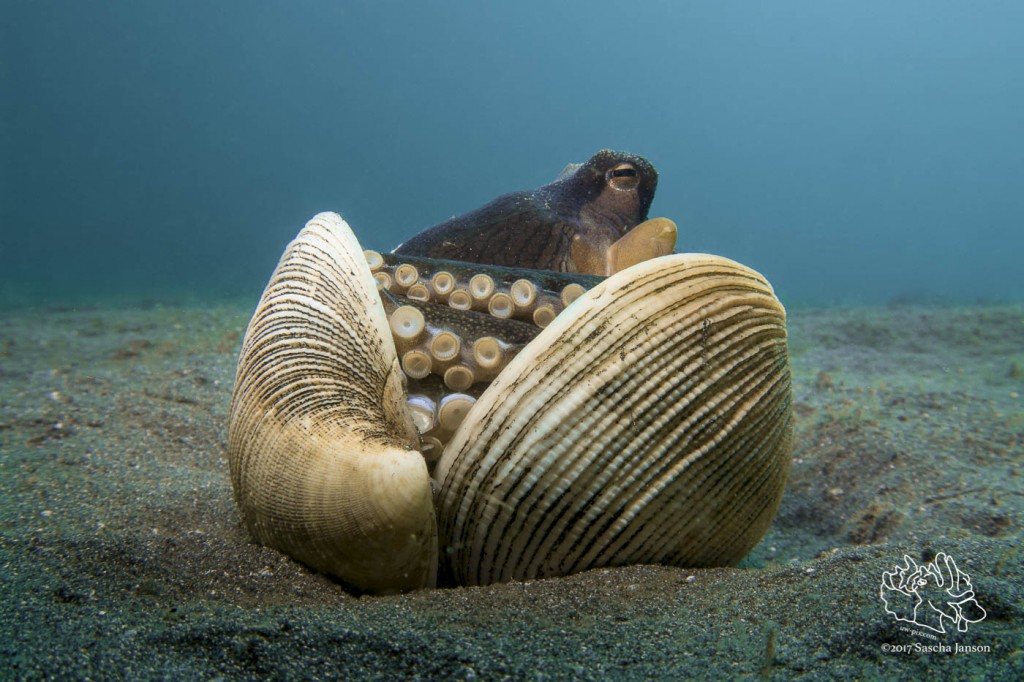
Coconut Octopus (Amphioctopus marginatus) in the Lembeh Strait |Canon G7X Mark II, 1x SOLA 2500SF (on flood), f9, 1/250sec, ISO160
All the images were shot with a Canon G7X Mark II in a Fantasea housing, and some of them where shot with additional Nauticam CMC-1 macro lens. The lens was mounted on the housing with the uw-pix.com Flip-Mount for Fantasea housings. If you’re interested in purchasing a Flip-Mount for your Fantasea G7X Mark II or G16 housing, please use the links below.
Flip-Mounts are also available for other housings and as well for SubSee and INON macro lenses. Please email for more details, or click here.
- Sale!
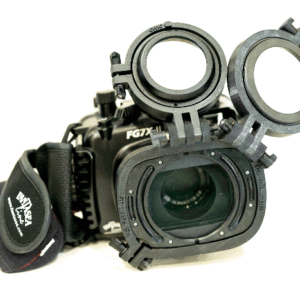
Flip-Mount for Fantasea housing
Price range: €129,00 through €221,00 Select options This product has multiple variants. The options may be chosen on the product page
Underwater settings for Canon S120 / G7x and Macro Photography
These are suggestions of settings for the Canon Powershot S120, but the settings work as well for the Canon Powershot (G15 / G16 /G7x / S110) cameras for Underwater Macro Photography.
For shooting with strobe(s), I recommend using MANUAL mode:
F8.0 (for maximum depth of field) – (F11 on G7x)
1/250sec or faster (for minimizing ambient light)
ISO 80 or 100 (for minimal noise) – G7X: ISO 125
AWB (when shooting RAW it doesn’t really matter – we can make a white balance later in post-production)
BKT OFF
Single Shot (when shooting with strobe(s))
Self Timer OFF
Spot metering (doesn’t do anything when shooting in manual mode, but if you’re shooting in program modes it just measures the light on the spot and not the overall image)
4:3 (shoot at max resolution, you can crop later if needed)
RAW (I’m shooting only raw, if you want JPEG, I recommend setting the camera to RAW & JPG large so you’ll have RAW images for later use)
ND filter This filter will cut your exposure by -3 stops. Use it if the image is still overexposed with minimum strobe power or if you want a black background. It’s very useful when shooting super-macro with a close-up lens like the INON UCL 165, INON UCL 100, SubSee+5, SubSee+10, or Nauticam SMC.
When shooting super-macro with a close-up lens you have to use the zoom to get the best possible result. If you want the maximum magnification, zoom in all the way (make sure to switch the Digital Zoom OFF), then get very close. The distance depends a bit on the lens, but typically I would say between 3-6cm / 1-2inches away from the subject (the subject should get in focus automatically when the continuous AF is set to on), half-press the shutter until you get the green or blue square and shoot.
Practice first on land to avoid wasting valuable time underwater!
Here are some shots I took with a single strobe:
Flamboyant cuttlefish (Metasepia pfefferi) shot with S120 in manual mode (f8, ISO80, 1/400sec, 1x INON UCL165 macro lens, 1xINON D2000)
Wire coral shrimp (Pontonides uncigar) shot with S120 in manual mode (f5.7, ISO80, 1/800sec, ND filter ON, 1x INON UCL165 macro lens, 1x INON D2000)
Chromodoris nudibranch (Chromodoris annae) in front of Tunicate shot with S120 in manual mode (f8, ISO80, 1/800sec, ND filter ON, 1x INON UCL 165 macro lens, 1x INON D2000 strobe)
Shooting with LED lights:
If you’re shooting with strong LED lights, you can shoot in Av mode, if you want to be more creative, shoot in manual mode. The good thing about shooting with constant lights is that you can see the light before already, so the light-meters work! Good starting settings for shooting in AV mode are:
F5.6 for getting a relatively good depth of field (If you have powerful enough lights, and you get close, you can even shoot f8!)
ISO 160 or 200 don’t go higher than 320, or you will get a lot of noise
ND filter OFF – you shouldn’t use the ND filter when shooting with LED lights
Exposure compensation![]() should be at -2/3 – that will be a good exposure underwater.
should be at -2/3 – that will be a good exposure underwater.
All the other settings should be the same as above
The camera will now change the shutter speed to get the desired amount of light. If the shutter speed is slower then 1/60sec you have to go up with the power of the LED or change the ISO (higher number) or choose a larger aperture (lower F-number).
Painted frogfish (Antennarius pictus) shot with S120 in Av mode (f5.6, ISO160, 1/640sec, +/-(Exp.) -2/3,1x SOLA 4000, 1xSOLA 1200video)
Painted frogfish (Antennarius pictus) shot with S120 in Av mode (f5.6, ISO160, 1/1650sec,+/-(Exp.) -2/3, 1x i-Torch Pro6+, 1xF.I.T. 2400WSR on spot)
Hairy frogfish (Antennarius striatus) shot with S120 in Av mode (f5.6, ISO160, 1/1250sec, +/-(Exp.) -2/3, 1x F.I.T. 2400WSR on spot)
Here are some other settings I recommend setting the camera to (You’ll find these in the Menu):
AF Frame – 1-point or Center Don’t leave this setting on Face AiAF, because most likely the camera will not recognise the critters’ faces ![]()
AF Frame size – Small For shooting tiny subjects it’s easier to focus on the desired area
Digital zoom – OFF Don’t use the digital zoom, as it’s similar in quality to just cropping in post-production.
AF-Point Zoom – OFF This is my personal preference, some people like having an enlarged centre focusing area when focused, I prefer to only get the green square. Play around with it and see what you like better!
Servo AF – OFF I prefer to have the camera only focusing once when I half-press the shutter, so I can rock in and out to get the subject in focus (while keeping the shutter half-pressed). If you switch the servo AF on, the camera keeps focusing while half-pressing the shutter. If this function is set to on, the frame turns blue when in focus, if it’s off, the frame turns green when in focus.
Continuous AF – ON It can be helpful to keep this function on. It allows the camera to focus continuously without half-pressing the shutter button. It will focus faster when you finally half-press your shutter button to take the image. It also uses more battery, if you want to save battery power, switch it off.
Touch Shutter – OFF (only S110 / S120) You cannot use the touch screen underwater, so no real use for that.
AF-Assist Beam – OFF The beam will be blocked by the housing, so not really useful ![]()
MF-Point Zoom – on It enlarges the center focusing area for easy viewing at all times when shooting in manual focusing mode.
Safety MF – ON This refines the manual focusing when the shutter is half-pressed. Switch it OFF if you don’t want that.
Flash Settings If you are shooting in Manual Mode with an external strobe, set to minimum power to save battery life. Switch OFF the Red-Eye Lamp.
Spot AE Point – AF Point Calculates exposure using the selected AF point (only works in AUTO-modes, useless in manual mode).
Blink Detection – OFF The camera most likely will not detect the critters’ eyes, so no use.
i-Contrast – OFF This function is useless unless you are shooting in Auto ISO mode. However, Auto ISO is not recommended. You will get noise in your images when the camera automatically chooses a higher ISO in darker underwater environments.
IS Mode The Image Stabilizer might be helpful if you are shooting at slower shutter speeds if you’re shooting a moving object, or when shooting video.
Record RAW + L – ON This function allows the camera to record simultaneously a RAW file + a large JPEG file. I strongly recommend shooting in raw, read this article if you want to know why.
Shooting TTL (through the lens)
If you want to use the TTL function of your external strobe, set the camera to Av mode (the G7x can do TTL in Manual mode), make sure the flash is on and use the same settings like above (f5.6 – f8 for macro)
The shutter speed will not go slower than 1/60sec if the flash is on.
If you don’t already use Adobe Lightroom, I strongly recommend using it. It will help you get organized with your images and makes displaying raw files easier. It is also a very powerful tool to enhance your images. Adobe Lightroom is available for MAC and PC.
There’s also the option of getting Lightroom and Photoshop as a bundle with the Adobe Creative Cloud Photography plan (Photoshop CC + Lightroom) for $9.99/month, which I find is a pretty good deal, given that you will always have the newest version of Photoshop and Lightroom.
- Sale!

Flip-Mount for Fantasea housing
Price range: €129,00 through €221,00 Select options This product has multiple variants. The options may be chosen on the product page
